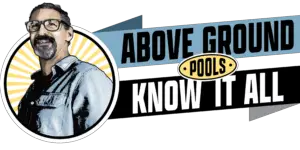Just because it’s called an “above” ground swimming pool, doesn’t mean they aren’t installed at least a little in the ground.
“The first two steps to installing an above ground swimming pool is to remove the grass/sod and then level the earth underneath to within an inch”
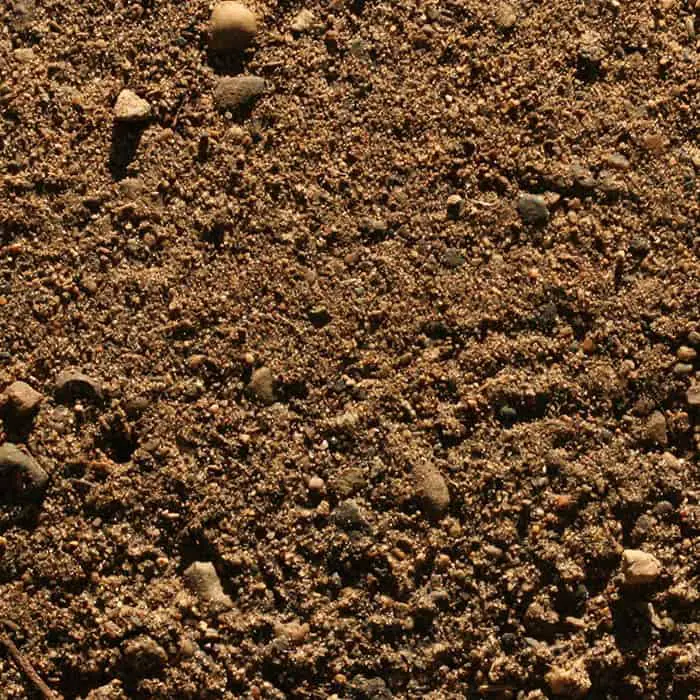
It’s common for potential above-ground pool owners to think that they can just add some sand to their grass to make things level and put the pool up on that. Yeah, no! Not even close.
When installed properly, an above-ground pool has to be placed on level ground (earth) with all the grass removed first. This means that most above grounds are in the ground at least a few inches if not much deeper.
If you consider that the average grass sod is about four inches deep AND the average flat area for a pool install is still off-level by 4-8 inches, then know that it’s not uncommon for an above ground pool to go in the ground 8 -12 inches (on the high side) even with a very flat looking area of the yard.
THE BIGGER THE POOL, THE MORE THE SITE WILL BE OFF-LEVEL
Planning on getting a monster-sized pool? Cool. Plan too on the area that needs to be leveled for it to be off more. The bigger the area that needs to be leveled, the more it will be off-level.
What I mean here is that if you are installing a 15’ round pool, then you will have the level about a 17’ circle in the yard (where you want to put the pool). If you are installing say, a 30’ round pool, then you will be leveling about a 32’ circle in the yard.
The span of 17’ (for a 15’ pool) versus the span of 32’ (for a 30’ pool) will have a considerable difference in grade. What this means to you is that the bigger the pool that you get, the more it will have to go in the ground at least on one side.
15 THINGS THAT MAY BE IN THE GROUND WHEN INSTALLING AN ABOVE GROUND POOL
So now that you have the proper expectation that you will be dealing with the earth when installing an above-ground pool, here’s what you may run into.
Hard Earth/Clay
Some earth can be too hard to level with just a shovel. Some yards will need a machine to move and level the earth because it’s way too hard.
Irrigation Lines
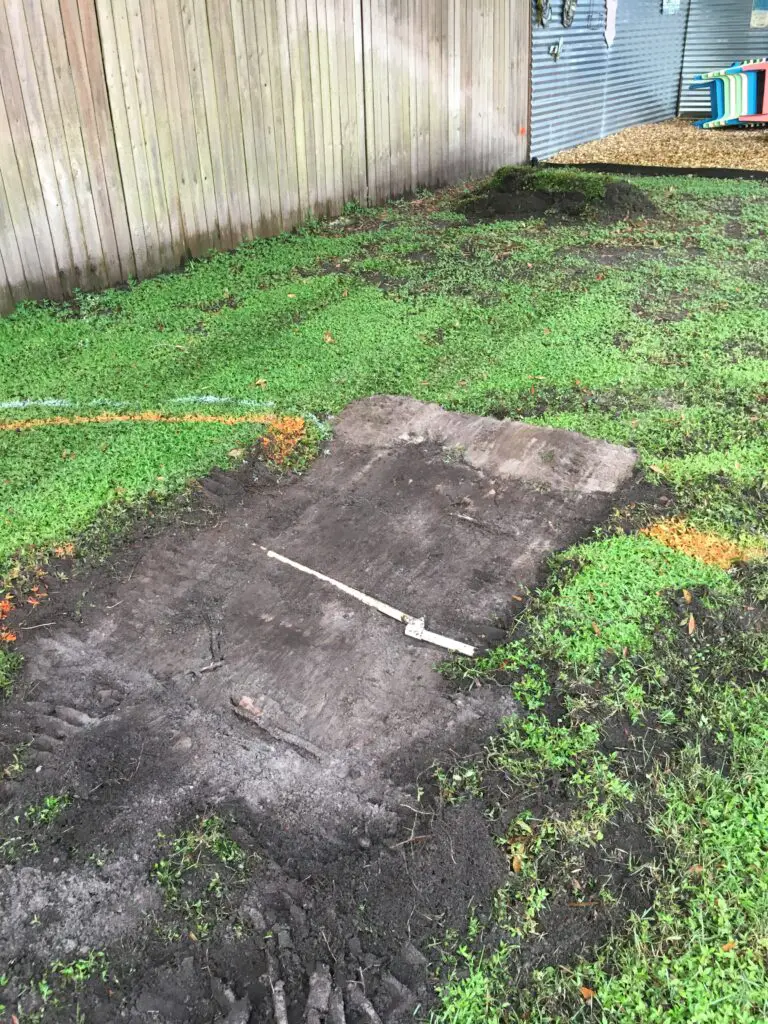
There is no set standard for how a sprinkler system is run and installed in any given yard. If you know you have an irrigation system, don’t assume that you know where the lines run.
It’s very common for people to think that they know where their irrigation lines are in the ground. Many decide to place their pool in a certain area of the yard to avoid these lines.
Also, many think that their irrigation lines will be run deep enough in the ground so they won’t get in the way of the pool install. FAIL! Irrigation lines are usually only just a couple of inches under the sod mass, so yeah, they won’t be deep enough.
Just assume that if you have a sprinkler system in the yard, you will run into a line or two (or three) when leveling for your pool. Reading this article will tell you what to do if you run into them.
Excessive Roots
There are small roots almost everywhere in yards. What I’m talking about here are big roots and lots of them.
The chances are much better that you won’t run into any big roots if there are no big trees nearby the install site, but it’s not a guarantee. Sometimes there are big roots in the ground from a big tree that used to be there and you didn’t know about it.
Big roots can be tough to remove especially if they are still alive. They have to go though, so use an ax or even a chainsaw if needed to remove them. I use a cordless sawzall with a wood blade on it mostly for this. That is the best tool for cutting out roots.
Buried Old Tree Stump
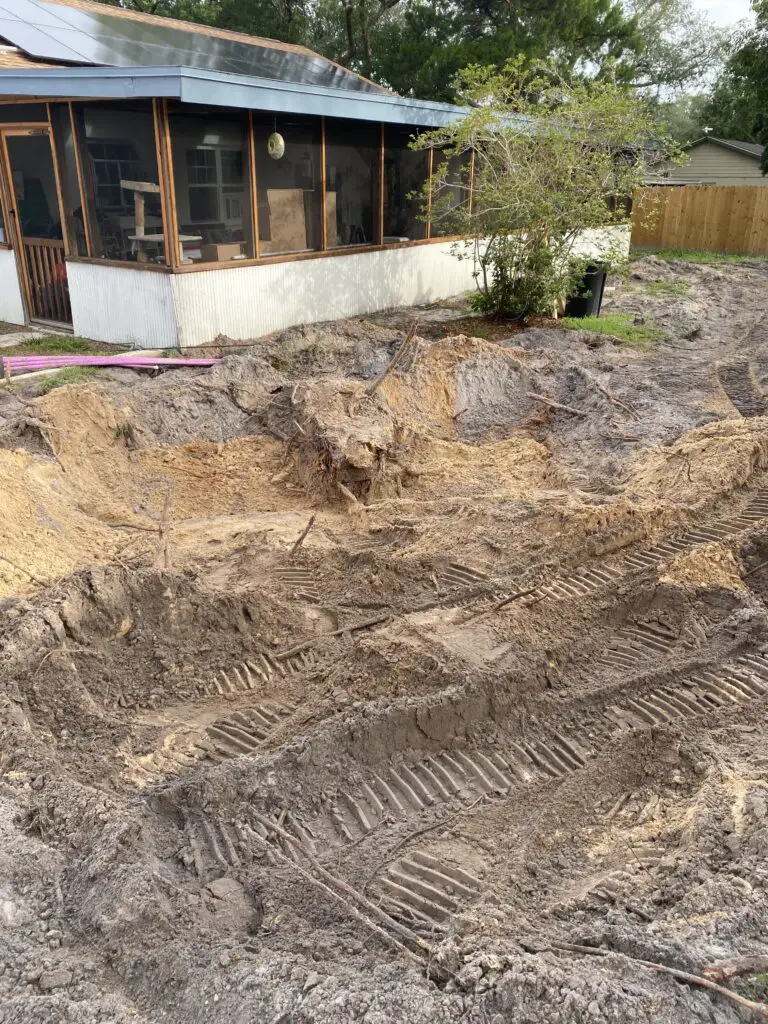
There can always be surprises in the earth. Old forgotten tree stumps are one of those big surprises.
This is the most common unknown that will make a new pool owner decide to move the location of where the pool is going. Big tree stumps can be impossible to dig out or they need to be dug around and a stump grinder will be needed to grind it down to below the level that you need to install the pool.
Note: If you know that there was a big old stump in the area that you want your pool to go to, consider another area of the yard for the pool. An old stump may be rotted and come out somewhat easily, but most likely not.
Construction Trash
This isn’t as common as it used to be (at least here in Central Florida). I used to run into buried old building materials left from when the house was built all the time. Then they passed a law that says you can’t bury this stuff when building, so now I only run into this occasionally.
Old concrete block pieces, tile pieces, nails, flashing materials, trim pieces, plumbing leftovers, shingles, etc. can be found in the ground just where you want to put your pool. And that really can suck.
Old Drain Field
This can be another big surprise for all involved. You are digging and start hitting thousands of white rocks. Yep, that was an old drain field.
Digging excessive medium-sized rocks like (what is used for a drain field) with a shovel can suck. Add an occasional buried plastic or clay drain line and you have a dig party. Good times.
You’ll want to dig most of these rocks out but don’t try to get them all. That will take too much time and all of your patience (and you’ll be needing a lot of that patience when the time comes to install the pool).
Just make it to where you won’t feel any rocks that you leave in the ground on the pool’s bottom when completed. These rocks aren’t jagged, so you don’t have to worry about them damaging the pool liner. You just don’t want to feel them in the pool.
Existing Drain Field
Yep, if your house has a septic system and you don’t know where the drain field is, then you might just run into it when installing your pool.
Locating where your drain field is prior to choosing the pool location is solid advice. Learn about drain fields and above-ground pools here.
Old Trash Burn Site
When I was a kid, there were only three TV channels, you’d have to thaw out your freezer once in a while, and people would burn their trash.
Even though trash burning isn’t a popular as it used to be, I will still occasionally run into an old trash burn site (especially in the country).
You can’t really dig out all of the burnt remnants of a trash burn site. Dig out what you can so that a nice clean layer of earth or sand can go on top of anything left.
Big Rocks
There are small rocks almost everywhere in the earth. What I mean here are big rocks. Huge rocks. Rocks that don’t move well or at all.
This will depend on the area that you live in. Here in Central Florida, we don’t have big rocks in the earth until about just north of the Gainesville, FL area.
Your part of the country may commonly have big rocks as part of the earth. A big rock may make you decide to put the pool elsewhere.
Electrical Lines (Not Permitted)
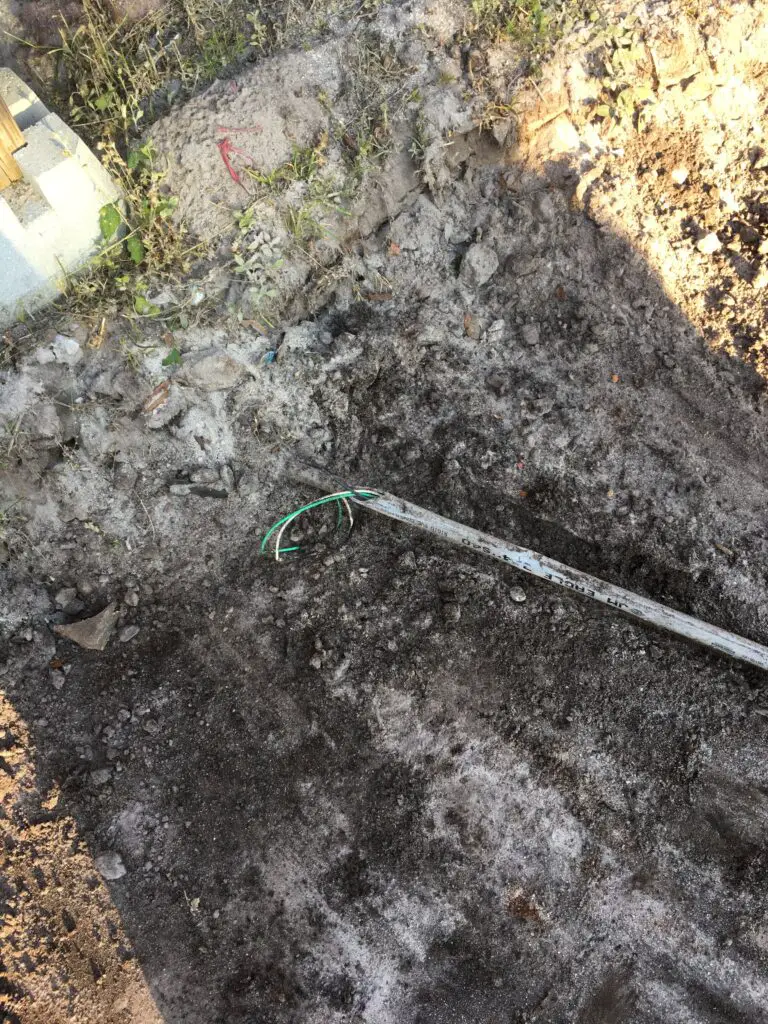
I say “not permitted” because just about every electric line that I have run into was not legal.
“Not legal” meaning the line wasn’t at least 18” inches deep with conduit or at least 24” deep without conduit. And this is why I hit them.
Seems to me that everyone remembers digging their electric lines deeper than they actually did. And yeah, I must say that’s annoying because hitting an electric line is never fun.
Do yourself a favor. If you ran an electric line to a shed or somewhere in the yard and are remembering that you dug it deeply, locate it before installing your above-ground pool.
99 times out of 100, the one who tells me “I dug the line and way down. You won’t hit it”, is always surprised when I hit his electric line just six inches down.
And if there is electricity at the shed in the corner of your yard and you are putting the pool up between the house and the shed, just assume that the line at least might be in the path of where the pool is going.
Water Lines
This is another common thing that I run into where the homeowner forgets that he ran it shallow.
Some water lines are from well pumps or are going from one backyard structure to another. It’s not as crucial to locate a rouge water line before hitting it, but it’s not a bad idea if there’s at least a possibility that one is down there.
Buried Concrete Slab
If the house is old, then there’s no telling what occurred in the back yard a generation ago. Don’t be surprised if you find the remains of an old slab just under the grass line.
With this, you can usually just break up the part in your way in pieces with a sledgehammer and remove.
Forgotten Pavers
More common than finding an old concrete slab, there can be pavers in the ground that were once used as a patio.
This can be a nice find if you have a use for them. Pavers aren’t as cheap as they once were.
Decorative Rocks
People in the past may have lined a walkway, patio, or garden area with decorative rocks.
When things changed in the yard, no one took them up, so the earth started to reclaim them. Now they are just under the grass line and in your way of leveling and making a nice, clean earth bottom for your future pool.
I hate running into decorative rocks, They can’t ever be reused and just get in the way. Most of these have to be removed too because you don’t want to feel them in the bottom of the pool.
Old Construction
Some yards have more history than you think. There were structures there that no one knows of or remembers. Like Rome or Athens.
While digging to level a pool, I have run into the bottom of old block walls, buried swimming pools, and remains of all types of long-gone outbuildings.
It can be fun to discover that something substantial used to be in your yard. Not so fun to have to relocate where the pool is going, but you get what I mean.
BONUS FIND – Clothesline Base
If while you are digging, you hit the stub of a metal pole and then discover it has a bunch of concrete stuck to it, then voila, you’ve unearthed where there used to be a clothesline. When no longer wanted, most just cut the clothesline pole just below ground level.
This giant dollop of concrete surrounding a rigid metal pole piece with be heavy, but easily dug out of the earth.
WHAT TO DO IF YOU RUN INTO SOMETHING BIG AND IT CAN’T BE REMOVED
When you discover that something is in the earth where you want your pool and it can’t be removed, then you have two choices.
The first choice is to find another spot to install the pool. This may not be as big a deal as you initially think. You may only have to move where you want it over a foot or two to avoid whatever is in the way.
You may also have to go to the complete other side of the yard too. This is construction though. And sometimes you can’t have exactly what you want with construction. Even if it’s just a pool that “supposedly” sits above the ground.
The second option is to raise the earth up so as to avoid said things in the way. This is done by bringing in some good clean fill dirt or sand and raising the entire area up.
Some will tell you that you can’t do that, but you can. I’ve built-up hundreds and hundreds of pool sites with no issues with settling ever. Not even once. Learn about that here.
Keep in mind that your goal here is to have a level, flat, and smooth pool bottom. This is why you have to remove most things that you find in the earth.
